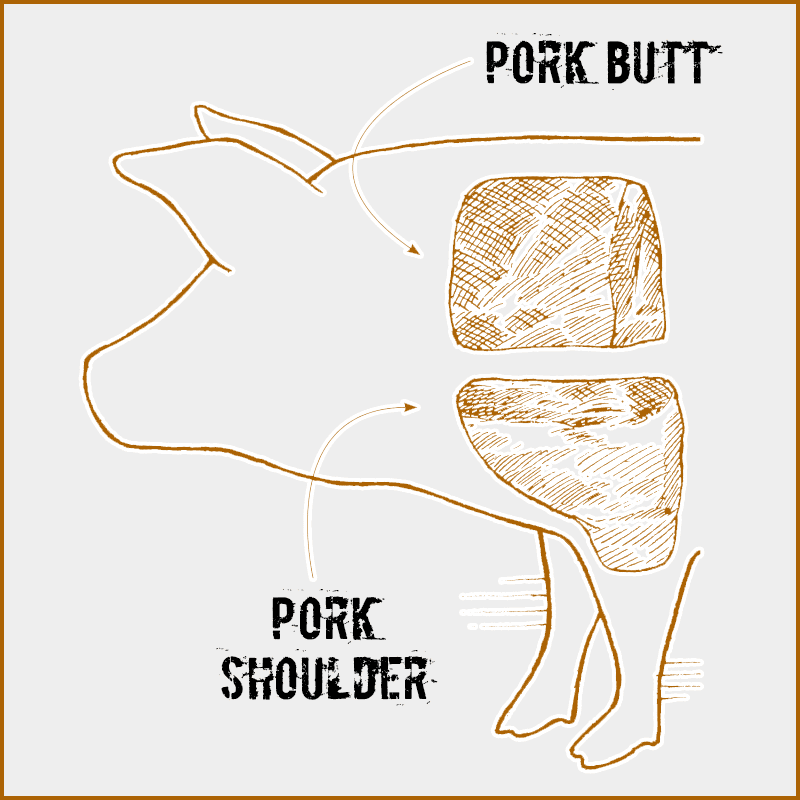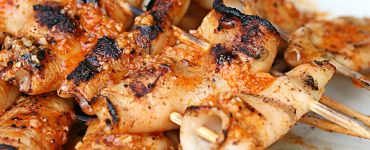Pork Shoulder, Boston Butt. Ever get confused by the way popular pork cuts are labeled? Fret no more.
Pork shoulder and pork butt (Boston Butt) are frequently confused — and misleadingly named — cuts of meat. Both come from the shoulder (not the rear) of the pig.
The pork butt is higher on the foreleg, while pork shoulder is farther down with some chest fat and muscle.
As relatively tough and fatty cuts, both benefit from long, slow cooking methods such as roasting, stewing or braising. But the cuts are different enough that most generally prefer pork butt, but that’s arguable.
Which one? Pork Butt or Shoulder?
Since pork butt, or Boston Butt, has more fat marbling throughout the meat and a more uniform shape, it’s the best cut for stewing and braising as well as for making tender pulled pork barbecue. It’s the most common among supermarket meat departments.
If a recipe calls for a choice between pork shoulder and pork butt, we highly recommend choosing pork butt for beginners. If you are a pro on the smoker, grab the bone-in shoulder and go to town. (The skin can render quite nicely!)
And don’t forget to use your Thermoworks RFX wireless probes. You want to hit the perfect temperature when smoking these cuts of pork.
Comparisons
| PORK BUTT | PORK SHOULDER |
|---|---|
| Also known as “Boston butt” | Also known as “picnic shoulder” or “picnic roast” |
| Well marbled with intramuscular fat | Typically has less intramuscular fat and marbling |
| Often sold with fat cap intact | Frequently sold with skin on |
| Rectangular, uniform shape | Tapered, triangular shape |
| Sold as bone-in and boneless | If boneless, typically sold in netting; when netting is removed, meat “unfolds” into uneven layer |












